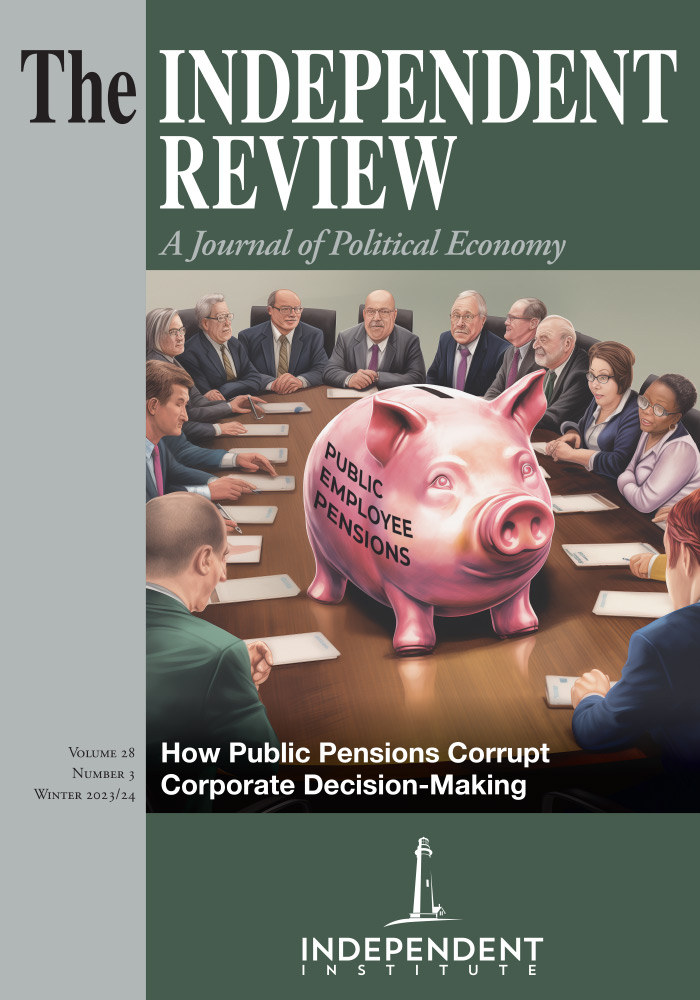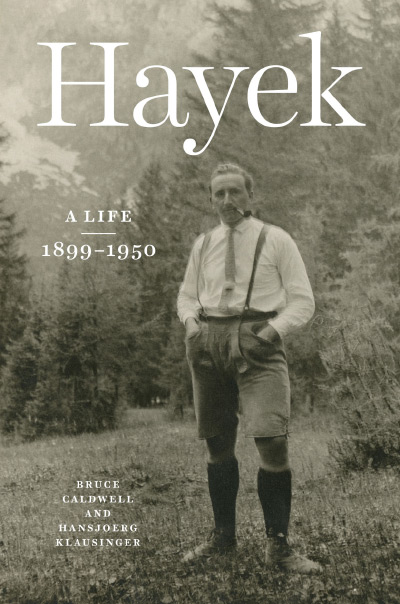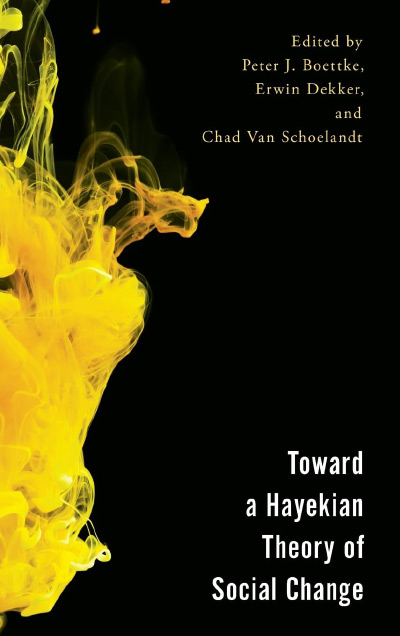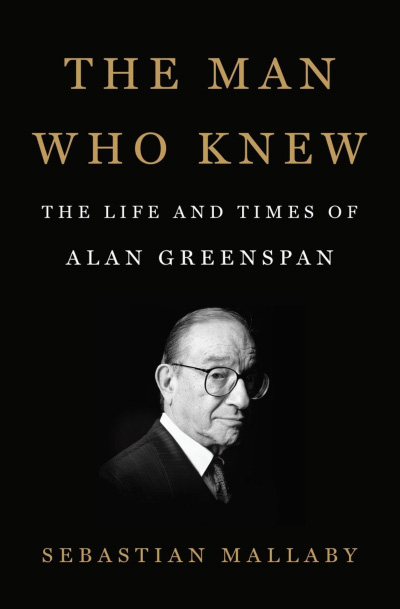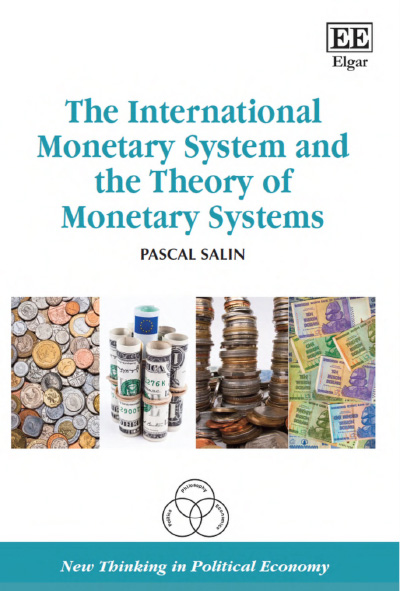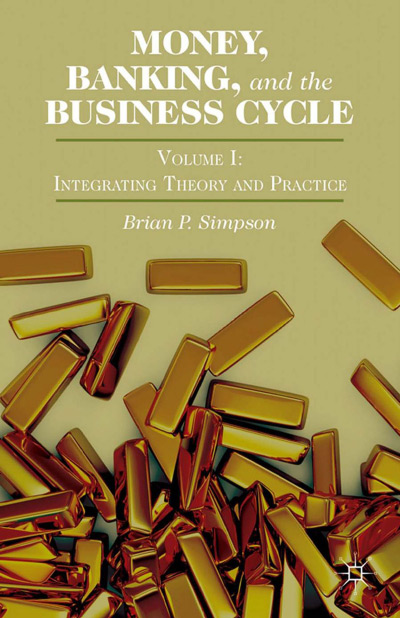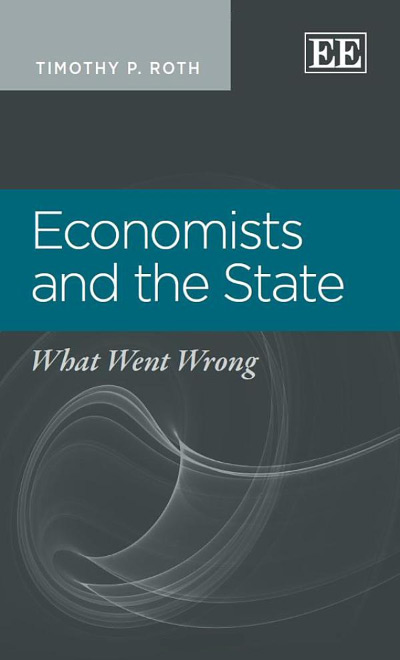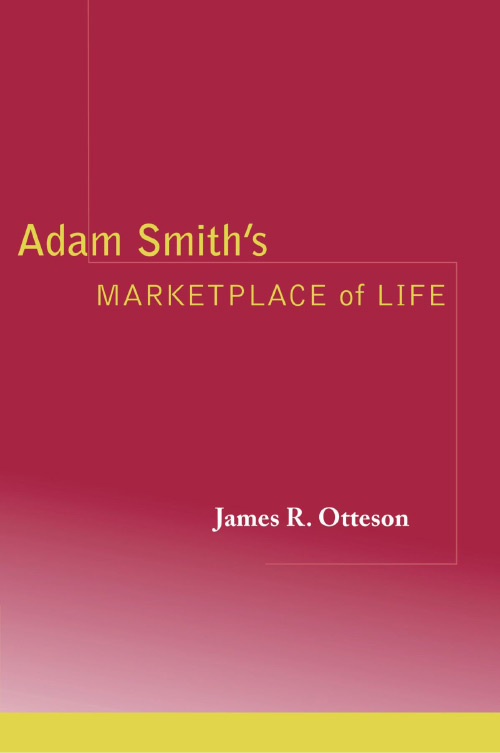Biographies of economists are still rare, especially compared with monographs about them. For F. A. Hayek we could already rely on Caldwell’s earlier Hayek’s Challenge (2004, Chicago: University of Chicago Press), Peter Boettke’s more recent F. A. Hayek (2018, London: Palgrave Macmillan), Jeremy Shearmur’s more politically oriented Hayek and After (1996, London: Routledge), as well as a number of other books. But this new book by Caldwell and Klausinger is a genuine biography that focuses on Hayek’s life and personality, with his ideas in the background. The book tells the story of his life from his birth until 1950, the moment that Hayek started his academic career in the United States at the Committee of Social Thought in Chicago.
The question is what this work adds to our knowledge of Hayek as a person, a thinker, and a liberal. And the simple answer is a lot. The biography excels in the way it embeds Hayek in his familial and social setting, and it demonstrates the extent to which his work was shaped, mainly in critical response, to the major intellectual developments of his age. Caldwell and Klausinger tell the story by providing a rich context of Hayek’s intellectual endeavors, first in Vienna and subsequently in London. The book also provides two major personal stories about Hayek’s private life that were perhaps not unknown to Hayek afficionados, but that are told here in much greater detail than ever before. These are, first, the gradual political and personal development away from his mother and brother Heinz, who were much less critical of the rising fascism and antisemitism during the interwar period than Hayek was. And second, the disintegration of his first marriage with Hella von Fritsch and the eventual ugly divorce that Hayek enforced in order to marry his first love, Helene “Lenerl” Bitterlich. In this review I will, therefore, focus on these lesser-known aspects to show what they add to our understanding of Hayek.
Let us start in Vienna. Hayek was a mediocre pupil in high school who was frequently bored. He learned a lot more from the many intellectual friends of his family than he did in school. He certainly did not seem destined for an intellectual career. After high school he served briefly in the Habsburg army at the Italian front, and upon his return in Vienna he lived the life of an upper-bourgeois bachelor with lots of theater and other social activities in the rich cultural life the Central European metropolis had to offer. At university he befriended Herbert Fürth and was soon involved in a liberal political student union that positioned itself between the socialist left and the clerical right. More significantly perhaps was that Hayek from this early age was more progressive and much less racist than most of his family members, significantly his mother, who blamed his Jewish friend Fürth for seducing her son to liberalism.
At the University of Vienna Hayek enrolled in the program of Staatswissen-schaften, which was a combined program of law, economics, and public administration, common at German-language universities. But his first interests were more in the philosophy of science as developed by Ernst Mach, the physicist famous for formulating the idea that theories and models provide the most “economic” explanation of the facts, as well as theoretical psychology, to which Mach also contributed. The biography does not tell us in great detail what was going on intellectually in all these different fields in Vienna, which was also one of the great intellectual centers of the age. But the book does wonderfully illustrate Hayek’s journey through these disciplines, and how the open university system, common at the time, made this possible. This broad intellectual culture was further stimulated in the many Vienna circles that typically met in private homes, and it was not long before Fürth and Hayek and their friends founded their own circle, the Geistkreis.
Around 1921 Hayek finally opted for economics over psychology, more out of pragmatic concerns than ideals. Economics offered better secondary job opportunities in a city where academic jobs were scarce. His first mentor in economics was Friedrich Wieser, who was nearing the end of his career but did introduce Hayek to work of Carl Menger, typically considered to be the founder of Austrian economics. Not much later he was introduced to Ludwig von Mises, who would do so much to guide Hayek’s early work in economics and beyond. Mises had recently published his famous argument against the possibility of rational economic calculation under socialism, which had an enormous impact on Hayek and some of his contemporaries. The urgency of this theme was reinforced by the fact that Vienna during these years was governed by the social-democratic party, which was directly inspired by some of the leading Austro-Marxist economists such as Victor Adler and Max Adler.
Then Hayek went off to the United States for additional training in economics for the academic year of 1923–24. The trip was significant for his encounter with American economics and the institutional approach of Wesley Clair Mitchell, but also because it temporarily separated him from Lenerl Bitterlich, with whom he had been close to engaged at one point. But Hayek did not follow through before his departure, and when he returned to Vienna in 1924, Lenerl was married to someone else. His impression of New York and the United States was not at all favorable, and he looked with disdain at the manners and cultural life of the city. Partly because he was on an NYU stipend, he lived in quite different social circles than he had been accustomed to in Vienna and, abhorring many American customs, even grew his characteristic moustache in protest to demonstrate that he was not one of them. Ironically, his failure to marry his first love would be the primary reason for his return to the United States almost twenty-five years later.
After his return to Vienna the book reaches more familiar territory. Hayek starts working on various applied economic subjects and becomes the director of a newly founded institute on business cycles. Although a favorite of Mises, Hayek by then does not stand out strongly from his peers such as Gottfried Haberler or Fritz Machlup. The detailed descriptions in the book make clear that Hayek’s strength was never his natural ability in a particular area, but instead his searching character: he was an avid reader and was continually looking for better theoretical explanations of the economic and social developments of his age.
In 1932 Hayek moved to London to start as Tooke Professor at the London School of Economics (LSE). In the spring of next year, he gave his inaugural lecture, “The Trend of Economic Thinking,” in which he for the first time laid out so many of the themes that would become central to his work. One of the book’s great eye-openers for me was the importance of the London context, next to the Viennese context. I have always worked under the assumption that most of Hayek’s critiques of scientism, behaviorism, and more generally the hubris of the social scientists of his age were primarily critiques of the Vienna Circle of logical positivism and social science as practiced in Germany since the 1870s—for simplicity’s sake, the German Historical School. I don’t think the biography directly disproves that idea, but what it does demonstrate is that the British spirit of the age was equally formative for Hayek’s work of the 1930s and ’40s.
His major intellectual opponent of his London period at the LSE was Harold Laski, a British socialist and public intellectual who confidently proclaimed the end of liberalism in books like Liberty in the Modern State and The Rise of European Liberalism. Laski argued that liberalism had indeed started as a lofty philosophy that sought to protect individual rights, but that during the nineteenth century and even more so during the interwar period it had been completely corrupted in favor of the capitalists. For him fascism as a political movement was the natural outgrowth of this corrupted form of liberalism. It gave up the pretensions of universality and was an open form of class-interest politics, of capitalists versus socialists. Laski was a proponent of planning and a kind of bridge between the more academically minded “market socialists” like Oskar Lange and Evan Durbin, and the more continentally and historically inspired Marxists. Laski, for instance, maintained close ties to the Frankfurt School.
Or take Karl Mannheim, a Hungarian sociologist who was also professor at the LSE. In his Man and Society, he argued for a transformation from the capitalism of the nineteenth century based on the unregulated trade cycle, limited democracy, free competition, and competitive individualism to a planned inclusive democracy. The new age of planning was supposed to be accompanied by “a new type of man who can see the right thing to do” and political structures that allowed him to do so (quoted on p. 446). Mannheim’s earlier book Ideology and Utopia had enjoyed great interest among members of the Frankfurt School, although Mannheim was never formally associated with them. Intellectuals such as Laski and Mannheim combined a sociocultural critical theory of history—one that helped justify why a new stage in history required a different form of social organization—with an enthusiasm for planning and thus embodied what Hayek called the “spirit of the age.” They were further supported by popular science writers such as J. B. S. Haldane, a biologist and geneticist who was a convinced socialist and a role model for the idea that the methods of the natural sciences could be applied to the social sciences. As well as J. D. Bernal, a socialist historian of science, and a great enthusiast for the idea of planning science itself. In other words, Hayek was fighting not only former Viennese rivals, but more directly his colleagues at the LSE.
The LSE during the 1930s has sometimes been presented as a classical liberal stronghold, a counterweight to the Keynes-dominated Cambridge. And with an economics seminar that was regularly attended by Edwin Cannan, Lionel Robbins, Ronald Coase, and Hayek it was also that. But this obscures how the earlier progressivism of Sidney and Beatrice Webb had evolved at a school that was under the directorship of William Beveridge and that was still predominantly progressive in outlook. The book, of course, pays a good deal of attention to Hayek’s theoretical disagreements with Keynes, but makes clear that for Hayek’s broader intellectual development this LSE environment was at least as important. This progressivist ethos continued after the war, when many of these intellectuals held positions of influence in or close to the Labour Party government, which won with a landslide victory in 1945, ousting Churchill.
In this way I think this biography also addresses a key question in Hayek scholarship: namely, whether there is a break in Hayek’s thought, a transformation, or even a Hayek I and Hayek II, in the way that philosophers talk about his cousin Wittgenstein I and II (Bruce Caldwell 1988, Hayek’s Transformation, History of Political Economy 20 [4]: 513–41). Precisely because the London context comes out so clearly here, this question fades to the background and a different picture emerges, one based on Hayek’s self-description, which I have tended to write off as a kind of mixture of self-deprecation and humble bragging: the idea that Hayek was a puzzler rather than a master of his subject. The authors do not frequently engage in linking personal characteristics to his work, but when Hayek writes to Walter Lippmann in 1937 that “reason is not a given thing, but a process,” I could not help but think that he was describing his own intellectual struggles.
These struggles come out quite clearly in the many projects that Hayek starts but never quite finishes. This is as true for his work on capital theory of the 1930s as it is for his big project on the Use and Abuse of Reason, the results of which were published in The Road to Serfdom (1944, Chicago: Chicago University Press) and The Counter-Revolution of Science (1952, Glencoe, Ill.: Free Press). When Hayek continues in his note to Lippman that “progress is the one thing that cannot be possibly planned,” he is again making a deep philosophical point as well as an observation about his own endeavors (cited on p. 455). Caldwell and Klausinger mostly refrain from such connections, but by presenting his intellectual work next to his personal life they come out clearly. Hayek’s skeptical rationalism was not merely an epistemological position, but also an experiential fact, to which he was perhaps more attuned as an intellectual puzzler than those he characterized as masters of their subject, such as his good friend Robbins.
The picture that I got from this biography was that Hayek’s research program took a very long time to establish. Many of the arguments he developed were contextual; they came about through quite specific conversations or, more often, frustrations with the work of his contemporaries. He keeps picking up small elements and critiques, which slowly coalesce into The Road to Serfdom. In this bricolage Caldwell and Klausinger are excellent guides because of the analytical precision they bring to their presentation of the different pieces of the puzzle, which become assembled into Hayek’s famous “knowledge problem,” his epistemological critique of economic planning, empirical social science, and positivist philosophy of science. This makes The Road an even more important book in Hayek scholarship, because it is the first time that the different elements come together in one project. And even that is more adaptation to circumstances than plan. Although Hayek becomes a British citizen in 1938, he is shunned by the British army and therefore focuses on an intellectual work that at the same time is a contribution to the war effort. When the Road to Serfdom is published in 1944, Hayek is already forty-five. A stark contrast with the mathematical wizards like Paul Samuelson, who made fundamental contributions before he was twenty-five years old.
Yet another original contribution of this great book is its use of Hayek’s correspondence, including the surviving letters to his brothers and mother. In the 1920s the difference between the liberal outlook of Fritz, as Hayek was called by his relatives, and his family members was already evident. Hayek was comfortable and proud of moving in what in Vienna were called “mixed circles,” where Jewish and gentiles interacted with each other (although he expressed some disdain for fully Jewish circles). These differences became more pronounced after 1933, when Hitler came to power in Germany. His relationship with his brother Heinz, who had started his academic career in Germany, becomes more strained. Hayek’s mother, Felicitas, like many of her contemporaries, looked with admiration at the economic recovery in Germany and welcomed the Anschluss of 1938, when Austria was taken over by the Germans. The letters between mother and son take on a more political tone, and Hayek’s mother expresses concern about Hayek’s pursuit of British citizenship and his role in the Walter Lippmann colloquium in August 1939. She was worried that Fritz might get in trouble when he returned to Vienna, and Hayek strategically only visited his family in the countryside that year. It turned out that the German secret police, the Gestapo, indeed kept a file on Hayek and would have probably interrogated him if he had visited Vienna.
The grand finale of the book could have been the founding of the Mont Pèlerin Society in 1947, when the war is over and Hayek and other thinkers from both sides of the Atlantic seek to reimagine liberalism for the postwar order. The longer version of that story was recently told in a separate volume that also contains the transcriptions of the first meeting of the society (Caldwell 2022, Mont Pèlerin 1947; Stanford, Calif.: Hoover Institution Press). But instead, the book’s narrative about the first fifty years of Hayek’s life ends with his divorce. It is an unflattering story for Hayek, to say the least. Already in 1933, he had admitted to his wife, Hella, that he had married her on the rebound and had never lost touch with Lenerl, his first real crush. Lenerl’s husband, Hans, unlike Hella, was more or less willing to allow Hayek and Lenerl to meet each other regularly. After World War II Hayek became serious about starting a new life with her, and he started seeking ways to get a divorce, but his wife disagreed. The resulting drama is told in sometimes horrifying detail in the final chapters, including the one-sided divorce in Arkansas, Hayek’s alienation from his daughter and son, his financial troubles, the fallout with Robbins, who was (ab)used by Hayek as an in-between after he left his soon-to-be ex-wife in London, and ultimately the job he landed in Chicago at the Committee of Social Thought.
The authors rightfully call the year 1949, in which things came to a climax, Hayek’s annus horribilis. The events had a deep impact on both his personal and professional life. Two years later Hayek would publish a study of the correspondence between the famous liberal (socialist) couple John Stuart Mill and Harriet Taylor. His honeymoon trip with his new wife, Lenerl, partially retraced the Mediterranean travels of the famous British liberal couple who had promoted “experiments in living.” Hayek later reflected on his divorce that “here is a moral standard, and I want to break it” (cited in Lanny Ebenstein 2018, Hayek’s Divorce and Move to Chicago, Econ Journal Watch 15:308). This is another instance in the biography in which I would have liked to see some more connections between his personal and intellectual life.
A few years earlier Hayek had written his famous essay “Individualism: True and False,” which presents his relational individualism in which both moral traditions and social connections play a key role. He reserves some particularly harsh words for the German cult of individuality that he sees reflected in Mill’s work (Hayek 1948, Individualism and Economic Order, Chicago: University of Chicago Press, 26). But it was in Chicago, after his divorce and new marriage, that Hayek started working on his magnum opus, The Constitution of Liberty, in which there is much more appreciation for experimentation, social norm changes, and although still tempered, individual development and self-expression. Although speculative, I think it suggests that Hayek’s relatively late development of his own personality and his growing resolve to divorce from his wife, a plan that does not really become concrete until his late thirties and is not finalized before he is fifty years old, is not disconnected from the fact that he finds his own intellectual voice relatively late. As mentioned above, he did not stand out clearly from his peers in the early 1930s, and that only really changes after the release of The Road to Serfdom in 1944. Caldwell and Klausinger’s book suggests that Hayek was a late bloomer.
In this sense there is also much to look forward to in volume two of this biography. In most cases it would be odd to divide a two-volume biography into a volume that covers the first fifty years and a second one that considers the rest of his life. But in Hayek’s case it might work. His most important intellectual works, except for The Road, were all published in the second half of his life. Regardless, Caldwell and Klausinger have already succeeded in deepening our knowledge of Hayek and have done so in an eminently readable book. One of my favorite biographers, the Dutch author Jolanda Withuis, has suggested that biography is the liberal genre par excellence, because it highlights the subjective experiences and agency of the individual. It is only right that the greatest liberal of the twentieth century now has a worthy biography.

